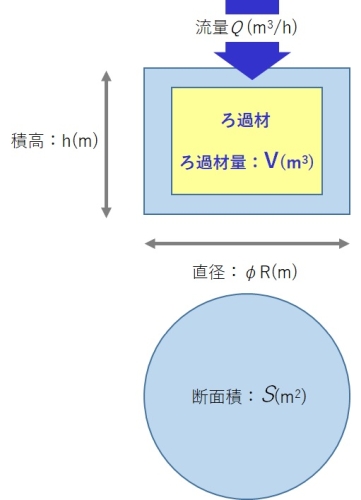Tech & Tools
Technical information
- HOME
- Tech & Tools
- Linear velocity (LV)
Linear velocity (LV)
Linear velocity (LV) is calculated by dividing the flow rate by the cross-sectional area of the filter tower by the velocity of water passing through the cross-sectional area of the filter tower per unit time. The unit time used here can be expressed as per day (○○m/d) for large facilities such as water purification plants, and per hour (△△m/h) for small and medium-sized pressure filtration towers. The feature is that there are many. Filtration device design Linear velocity (LV) is used in the design of physical filtration devices such as single-layer and multi-layer filtration. When designing only with linear velocity (LV), it is recommended to design with a minimum stack height of filter media of 0.6 m or more.

The LV setting is done by the software designer. Increasing the value will make the device more compact and reduce costs, but if it is too fast, sufficient processing will not be performed, so careful design is required.
In river water, industrial water, and shallow wells, the water quality fluctuates widely, and at high speeds, the amount of water leaking from the pipe wall increases, so it is often designed as LV10 to 15m/h as standard.

Head Office
1-12-11 Tagawakita, Yodogawa-ku,Osaka
532-0021
Overseas Business Department
TEL +81-6-6301-6460
FAX +81-6-6308-3022




